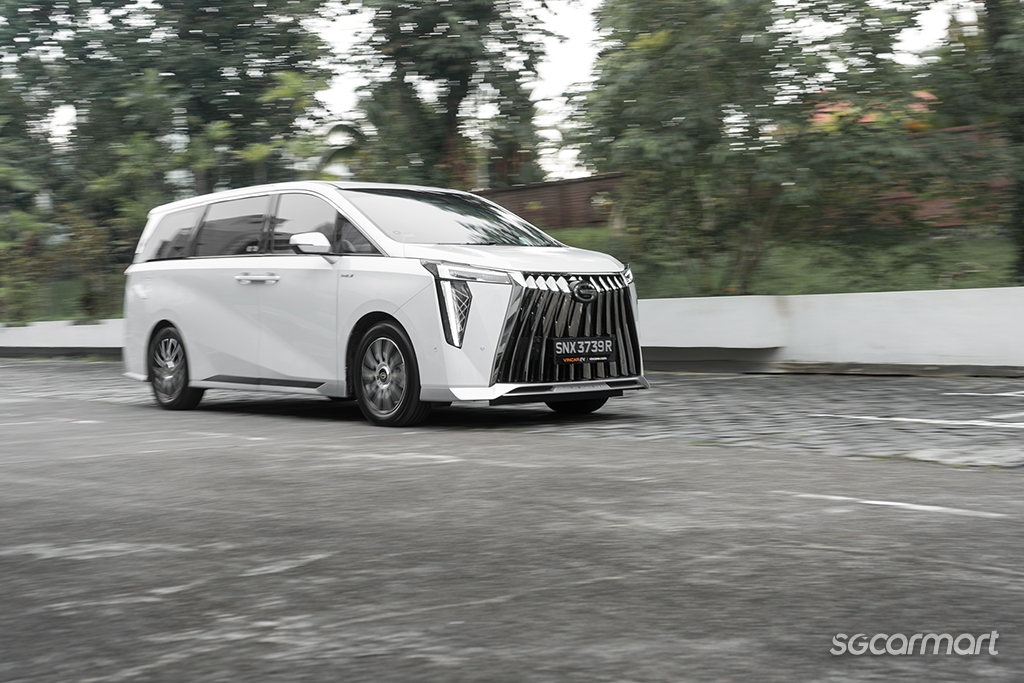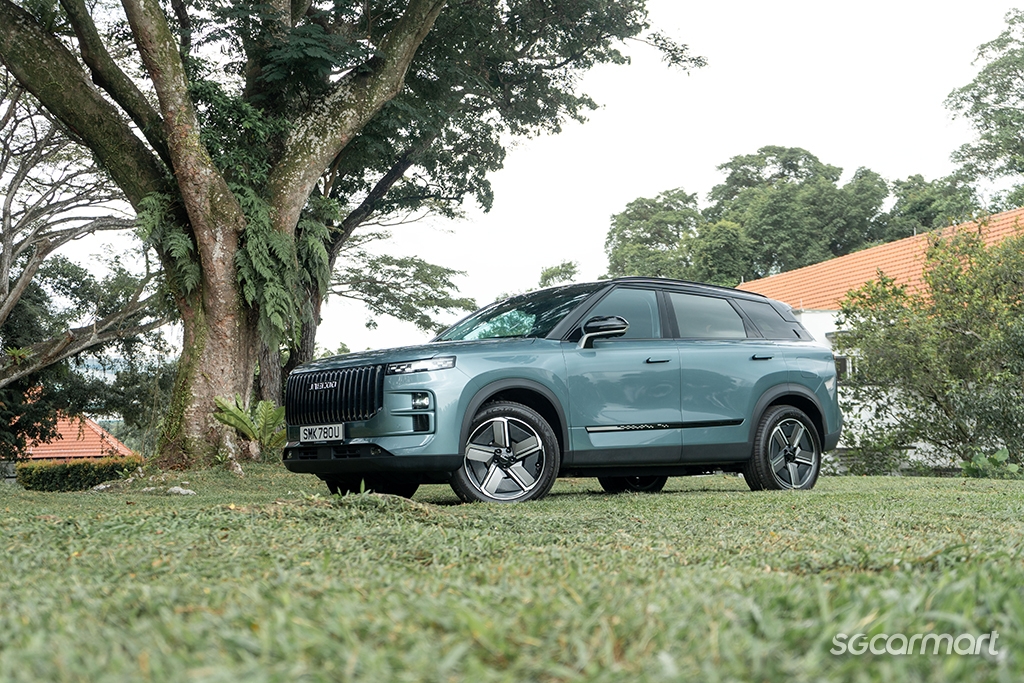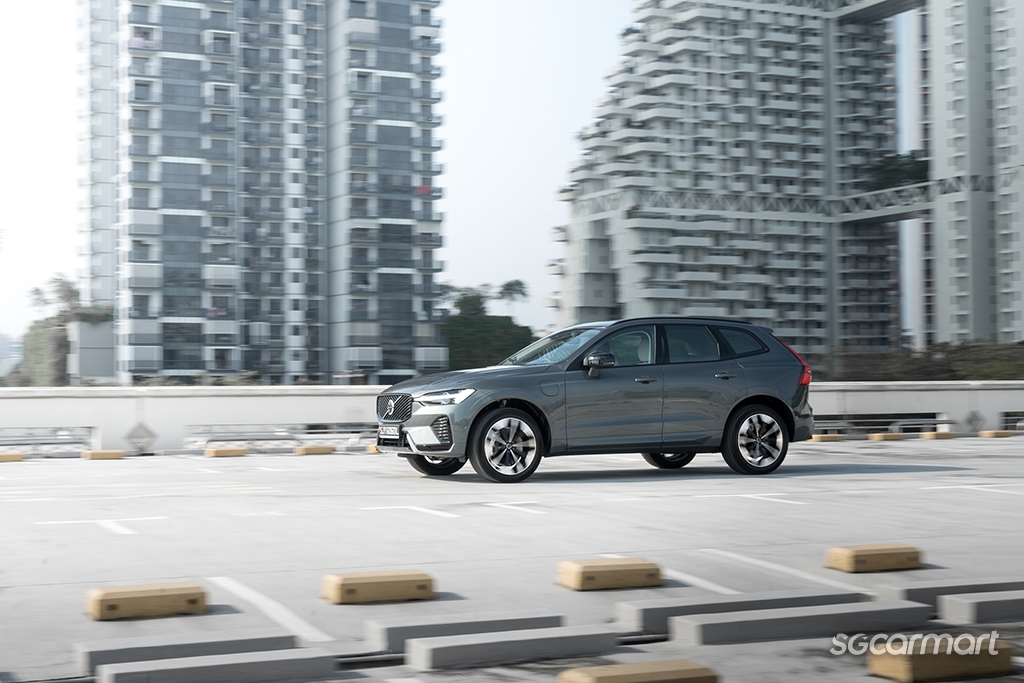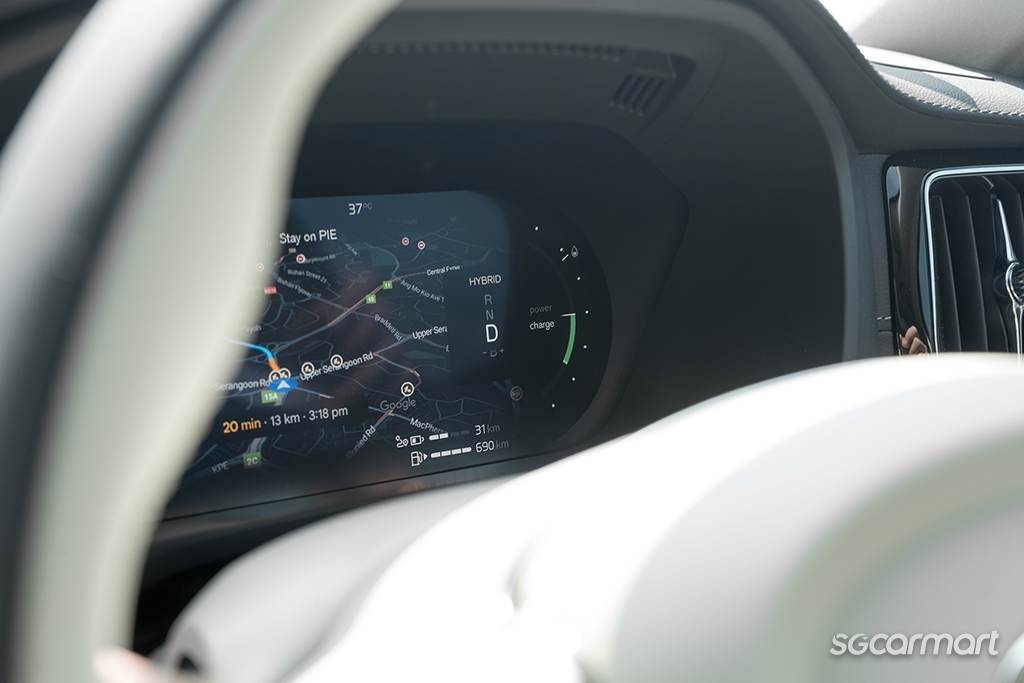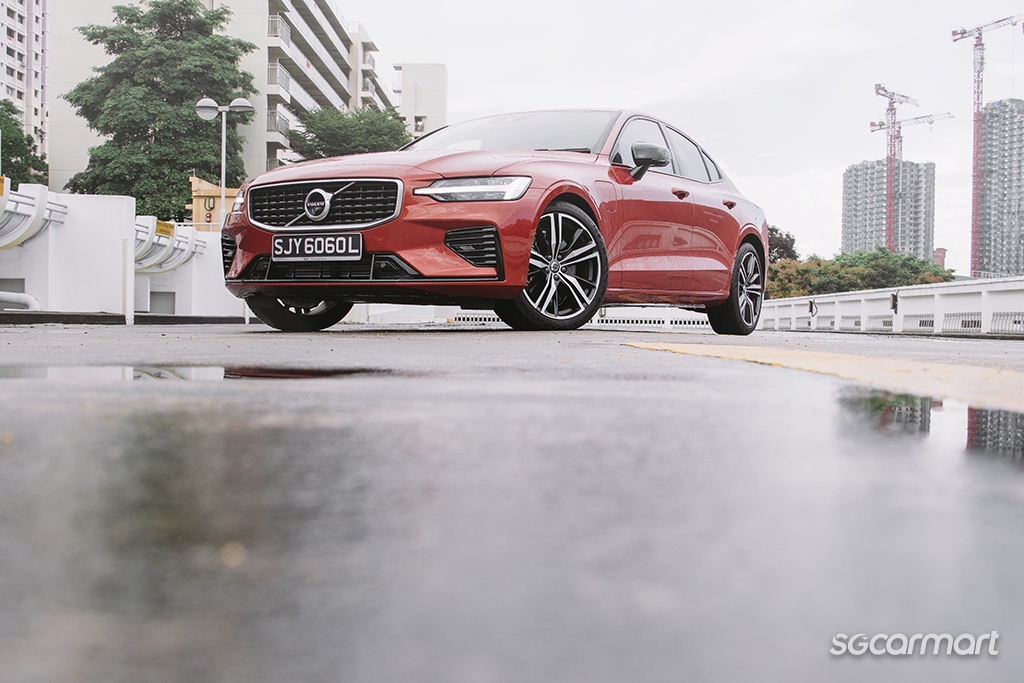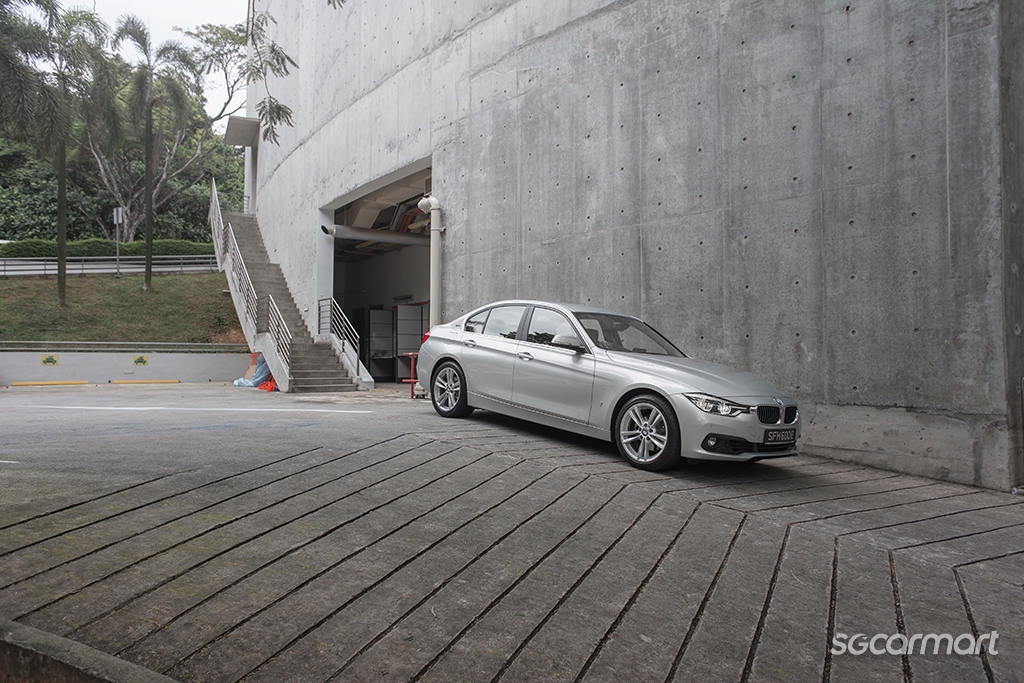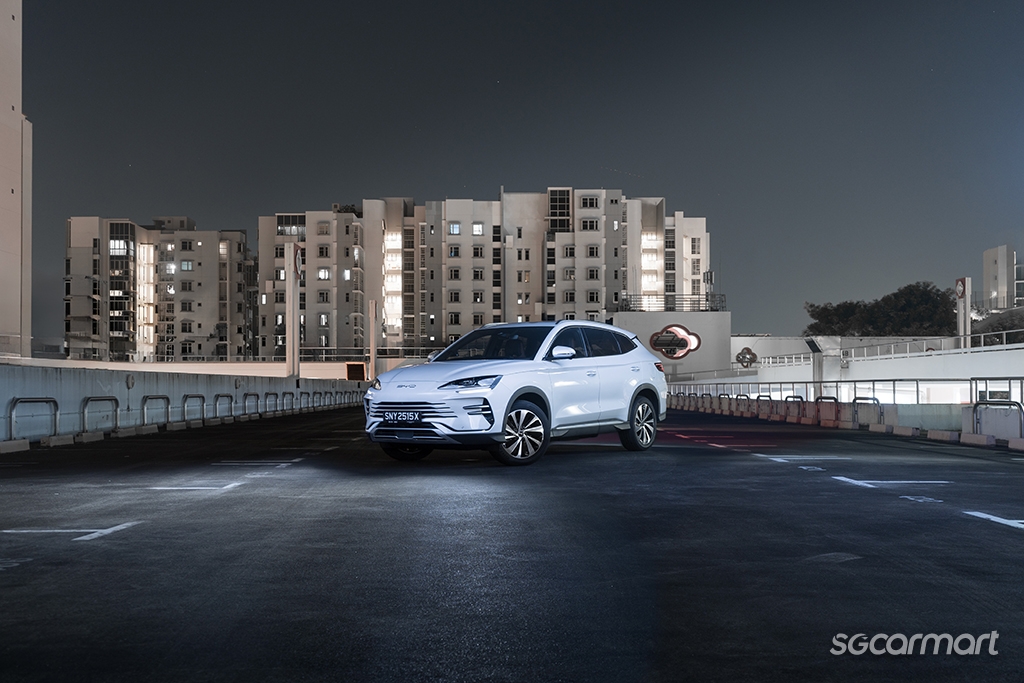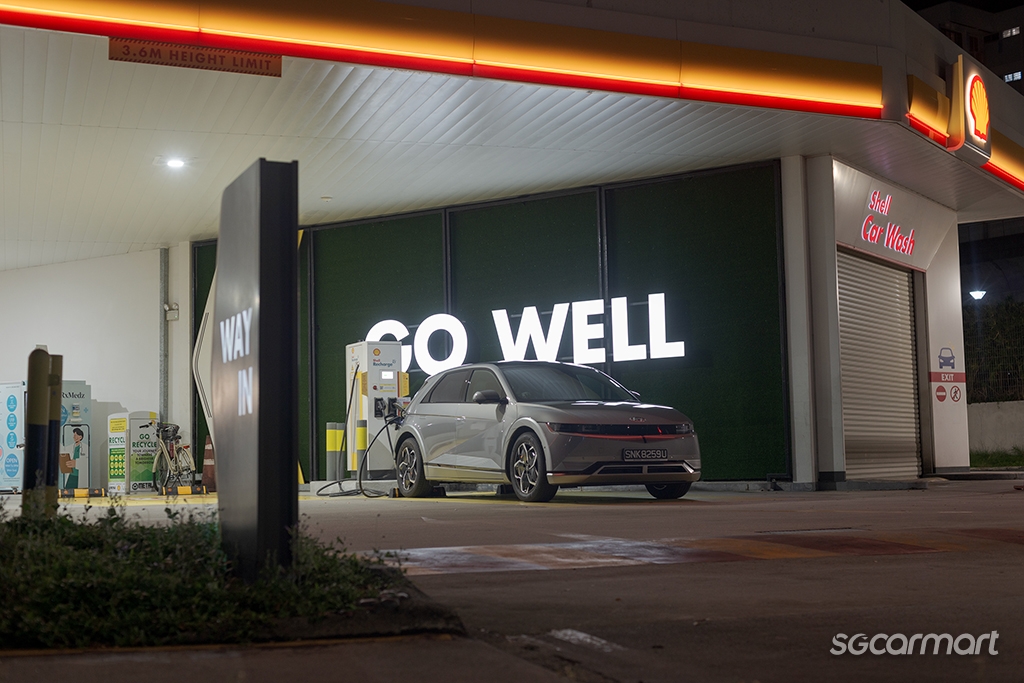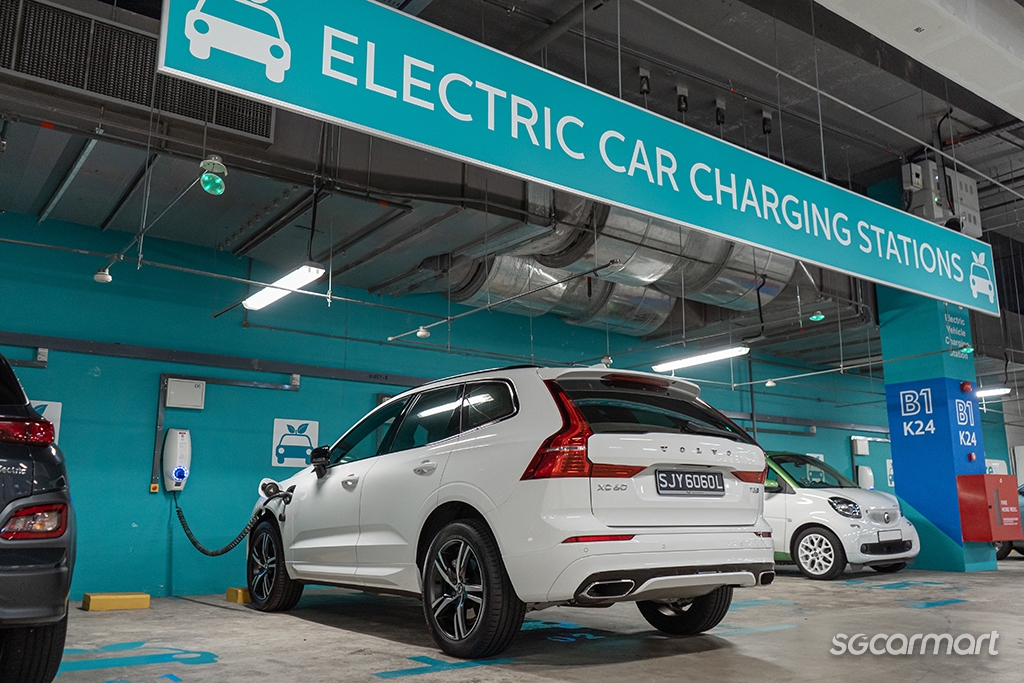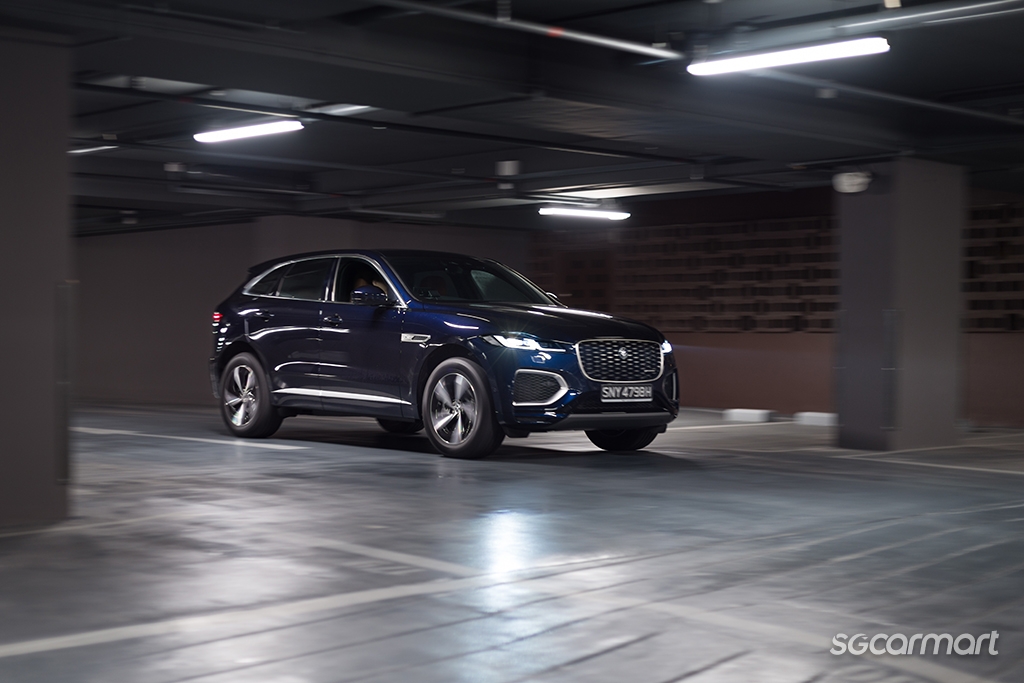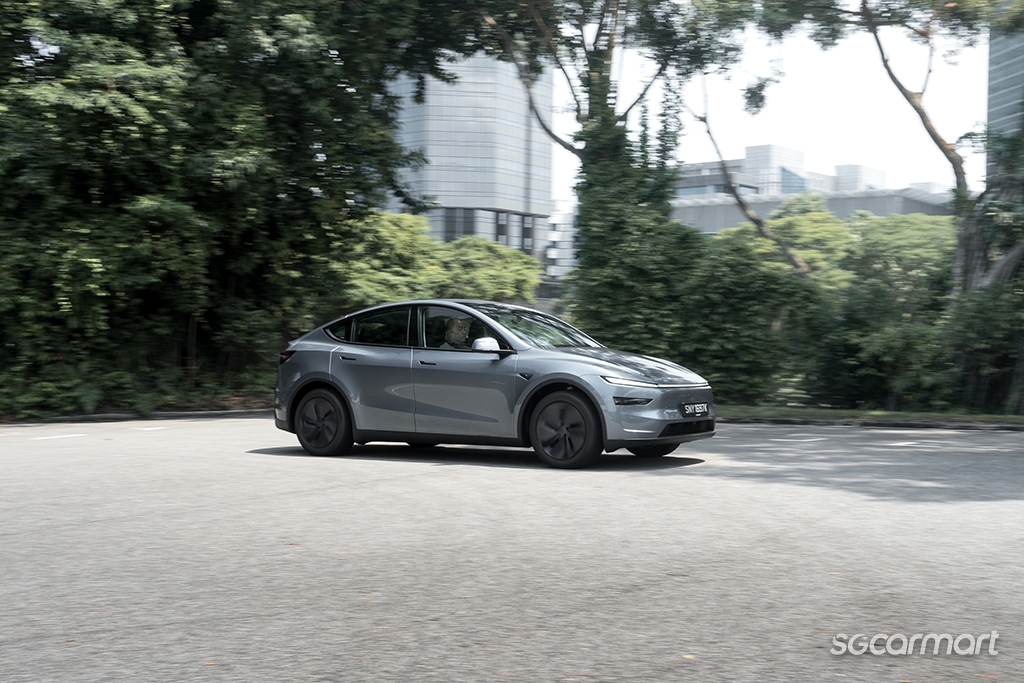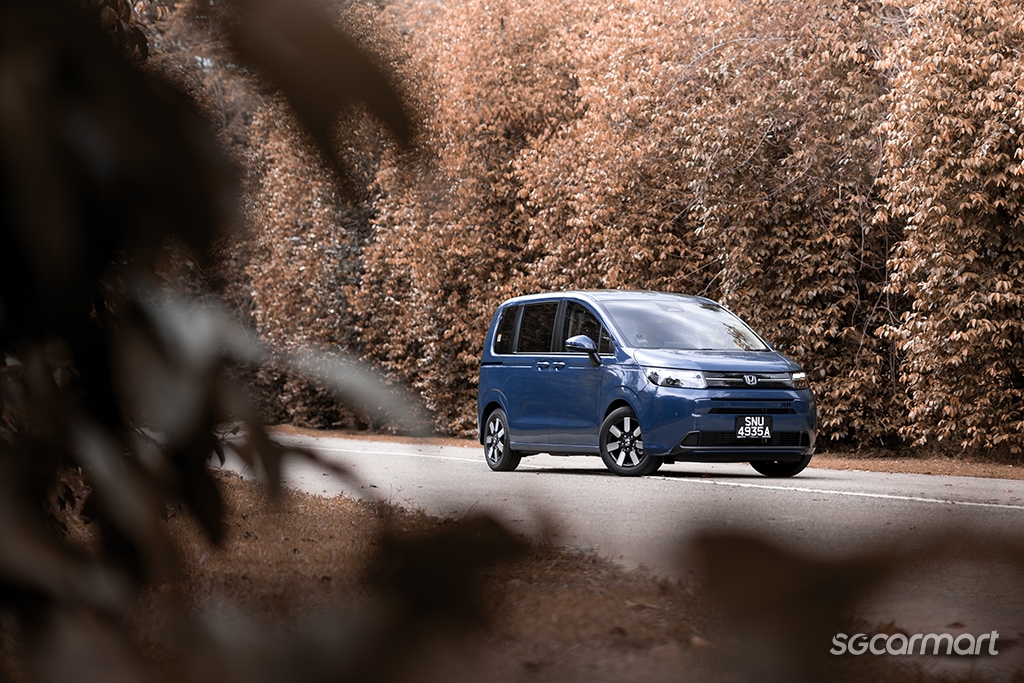The rise of PHEVS: A deeper look
27 Aug 2025|3,923 views
As we've previously noted, the uptake of plug-in hybrid vehicles (PHEV) in Singapore has seen a noticeable increase in the first six months of 2025. And to no one's surprise, that buzz is being driven by the buzziest brand in Singapore in 2025 - BYD. The recently launched Sealion 6 is the latest in a slew of new PHEV models to be launched in Singapore in recent months.
This rise of PHEVs is not unique to just us. At this year's Shanghai Auto Show, PHEVs were dominating the headlines. Alongside a slew of Chinese brands that most people here have never heard of, Mazda, Nissan, Zeekr and Deepal all showed off new PHEV models (and PHEV technology). And the PHEV growth in China has been both rapid and steady (driven both by government subsidies and manufacturer products) - sales in December 2024 reached 622,000 units, up 70.9% year-on-year.
So it seems like PHEVs are having something of a moment in the sun.
Back here in Singapore, we're also seeing PHEVs taking off - new models like the Sealion 6 and Jaecoo J7 promise over 1,000km of range, while also being priced competitively as well.
This feels… new.
We've had PHEVs come and go over the years, even as far back as 2014. But while the technology may have presented potential, it never stuck. And yet, it seems like in 2025, something has potentially changed.
What are some of the factors contributing to the recent rise of PHEVs, and should we expect this trend to continue?
Evolving products
PHEV technology isn't new. Far from it. Did you know that the first production plug-in hybrid sold in the world was… made by BYD? Yes, the F3DM (an unmistakable Corolla-clone) was launched in China in 2008.
Models like the Chevrolet Volt and Mitsubishi Outlander PHEV found some success in other markets, but locally, PHEVs never really took off. Prior to this new slate of PHEV offerings, PHEVs previously would typically be found at the top of brand's model ranges, and were priced as such (the Porsche Panamera S E-Hybrid is one example). Many of these models had large capacity engines, with the electric-components used more to supplement performance. In just about every case, they were tuned for performance, not strictly efficiency.
However, with the new slate of PHEVs, we're seeing a shift towards more range extender-style systems, which use smaller-capacity petrol engines that serve primarily as a power generator. From a technical perspective, that's a notable shift - one that prioritises the PHEV's electric capabilities to maximise efficiency over performance.
This shift towards more economical products has also seen PHEVs move downwards on the price scale - the most affordable PHEV now, the Jaecoo J7, is listed at $215,888, a pricetag comparable to a top-spec Nissan Qashqai or Volkswagen Tiguan.
In tandem with EV development, PHEV technology has notably improved - the facelifted XC60 T8 model now offers twice as much all-electric range than the pre-facelift model from five years ago
Improving technology
And again, while the technology might be new or unfamiliar to many people here, manufacturers have been working on it for some time already. BYD's plug-in hybrid system is now in its fifth generation. Manufacturers like BMW and Toyota have also committed to continuing to pursue PHEV development into the future.
The improvement in PHEV technology has also happened in tandem with battery electric vehicle (BEV) development.
PHEVs now offer larger battery packs and thus better all-electric range. In the past, PHEVs would have a real-world electric range of around 30km. These days, you can reasonably expect over 60km of range. (For example, the battery capacity in the facelifted Volvo XC60 T8 model has gone up from 11.6kWh to 18.8kWh.)
Powertrain technology has also improved - batteries have improved energy density, and electric motors are more efficient. These improvements once again help increase the electric-only capabilities of a PHEV.
Another notable development is the ability for contemporary PHEVs have higher charging rates. (Again using the XC60 T8 as an example, charging has gone up from 3.4kW to 6.4kW.) Some, like the BYD Sealion 6, also offer DC charging (in the BYD maxing out at 18kW).
Battery costs have also gone down, thanks to improved technology and development, as well as greater economies of scale. 2024 saw lithium ion battery pack prices falling to record lows.
In the past, PHEV models were significantly more expensive than their direct petrol-only compatriots - but that price gap has definitely narrowed over time
Price competitiveness
The consequent result of all these advancements is that PHEVs have become cheaper.
When the Volvo S60 T8 PHEV model was launched in 2020, it costs $70k more than the regular S60 T5. And it’s worth highlighting that it was a different price climate then - that figure represents an almost 36% premium. The current XC60 T8 is $9,000 more expensive than the B5 model (a 2% premium).
Some of that improved price competitive can be attributed to taxation - PHEV models would typically qualify for a lower VES band than their regular petrol counterpart, and may get a rebate compared to a surcharge.
But much of that new found price competitiveness can also be attributed to lower development and production costs. Contemporary PHEVs typically utilise battery components derived from the brand's BEV platform (typically, a single/smaller battery module from the BEV's larger multi-module pack). Combine that with more modular, shared platforms (not just across car models but also across brands), better manufacturing processes and increased automation, PHEVs have become cheaper to produce.
Growing economies of scale also factor in. This is especially relevant for the Chinese manufacturers, as the large scale of manufacturing for the domestic market alone delivers greater economies of scale.
Times have changed. With this new generation, we're seeing PHEV models in more 'mass-market' positioning, again unsurprisingly led by these new Chinese offerings. Well, "new". We've seen a huge influx of new Chinese brands bringing EV models into Singapore, and its only in the past half a year or so that they've also introduced PHEV models. But it's worth noting that even a "brand-new" model like the Sealion 6 has actually been available in China as a plug-in hybrid since 2021 (there sold as the Song Plus).
Charging infrastructure has developed rapidly to meet the needs of a growing EV population, and PHEVs naturally also benefit from being able to tap onto this expanding infrastructure
Better infrastructure
One of the associated developments that has come with the BEV boon is the fairly rapid development of charging infrastructure. And that benefits PHEVs too.
With more charging options available, there is greater ability to more fully realise a PHEV's electric capability. Singapore is committed to deploying 60,000 EV charging points by 2030. Paired with modern PHEVs higher charging rates, this makes using a PHEV more viable.
Changing perceptions
The rise of BEVs has also perhaps helped evolve drivers' perceptions towards newer forms of powertrains. Where a PHEV would be deeply foreign and unusual even just five years ago, there is likely greater openness and even acceptance now (again, the increase in registration numbers in 2025 is evidence enough).
Conclusion
For a long time, PHEVs were touted as a best-of-both-worlds solution. In reality, they often were neither. Not good enough in their electric-only capabilities, far too expensive for their petrol capabilities relative to the competition.
But that's possibly changing. With improved products and lower prices, PHEVs have, at least relative to before, become a more viable option for buyers. BEV subsidies are also set to be phased out by the end of 2025, which may drive more buyers to consider PHEVs. With both improved product capability and increased product availability, in just about every way, the viability of a PHEV in Singapore has increased.
But in all likelihood, this PHEV uptick will have an upper ceiling, even if local buyers are increasingly convinced.
China is now dominating the PHEV landscape globally, in 2024 accounting for over 75% of the share of PHEVs in the world. But it's worth putting that figure in context: The 6.5m PHEVs sold in 2024 still falls behind the 11m BEVs sold, and represent just 8.7% of the 74.6m cars sold globally. And PHEV sales in China has slowed in 2025 - in July falling 3.6% compared to the previous year.
So while PHEVs may be increasing in popularity and utility, it will (and likely will continue to) form a small percentage of the total vehicle population.
Electrification converts may fully embrace EVs, while more traditional buyers might be better served with a 'normal' hybrid car - PHEVs are more viable than ever, but will likely still remain a niche choice
Some of the factors that have raised PHEV viability - improved battery technology and better charging infrastructure - also concurrently facilitate BEV adoption. Simply put: As PHEVs get better, so will BEVs.
PHEVs best serve drivers who's use case is much broader - perhaps more relevant in markets like the U.K. with Ultra-Low Emissions Zones, but also where drivers need to cover significantly longer distances regularly.
An ICCT White Paper analysis also offers an illuminating and instructive evaluation of the 'new energy' market - charted out to 2035, PHEVs are not expected to reach price-parity with ICE cars, while BEVs are expected to eventually be cheaper than ICE cars. Price always has been, and looks likely to continue to be a severe limiting factor (unless there are significant legislative initiatives to promote PHEV adoption).
The mixed utility of PHEVs is both its unique offering, but perhaps at the same time it's biggest limitation, especially in Singapore. Drivers who can maximise a PHEV's electric abilities through regular charging may be better off just opting for an BEV. Conversely, drivers who mostly rely on going to a petrol station may be better served buying a conventional hybrid car instead.
As we've previously noted, the uptake of plug-in hybrid vehicles (PHEV) in Singapore has seen a noticeable increase in the first six months of 2025. And to no one's surprise, that buzz is being driven by the buzziest brand in Singapore in 2025 - BYD. The recently launched Sealion 6 is the latest in a slew of new PHEV models to be launched in Singapore in recent months.
This rise of PHEVs is not unique to just us. At this year's Shanghai Auto Show, PHEVs were dominating the headlines. Alongside a slew of Chinese brands that most people here have never heard of, Mazda, Nissan, Zeekr and Deepal all showed off new PHEV models (and PHEV technology). And the PHEV growth in China has been both rapid and steady (driven both by government subsidies and manufacturer products) - sales in December 2024 reached 622,000 units, up 70.9% year-on-year.
So it seems like PHEVs are having something of a moment in the sun.
Back here in Singapore, we're also seeing PHEVs taking off - new models like the Sealion 6 and Jaecoo J7 promise over 1,000km of range, while also being priced competitively as well.
This feels… new.
We've had PHEVs come and go over the years, even as far back as 2014. But while the technology may have presented potential, it never stuck. And yet, it seems like in 2025, something has potentially changed.
What are some of the factors contributing to the recent rise of PHEVs, and should we expect this trend to continue?
Evolving products
PHEV technology isn't new. Far from it. Did you know that the first production plug-in hybrid sold in the world was… made by BYD? Yes, the F3DM (an unmistakable Corolla-clone) was launched in China in 2008.
Models like the Chevrolet Volt and Mitsubishi Outlander PHEV found some success in other markets, but locally, PHEVs never really took off. Prior to this new slate of PHEV offerings, PHEVs previously would typically be found at the top of brand's model ranges, and were priced as such (the Porsche Panamera S E-Hybrid is one example). Many of these models had large capacity engines, with the electric-components used more to supplement performance. In just about every case, they were tuned for performance, not strictly efficiency.
However, with the new slate of PHEVs, we're seeing a shift towards more range extender-style systems, which use smaller-capacity petrol engines that serve primarily as a power generator. From a technical perspective, that's a notable shift - one that prioritises the PHEV's electric capabilities to maximise efficiency over performance.
This shift towards more economical products has also seen PHEVs move downwards on the price scale - the most affordable PHEV now, the Jaecoo J7, is listed at $215,888, a pricetag comparable to a top-spec Nissan Qashqai or Volkswagen Tiguan.
In tandem with EV development, PHEV technology has notably improved - the facelifted XC60 T8 model now offers twice as much all-electric range than the pre-facelift model from five years ago
Improving technology
And again, while the technology might be new or unfamiliar to many people here, manufacturers have been working on it for some time already. BYD's plug-in hybrid system is now in its fifth generation. Manufacturers like BMW and Toyota have also committed to continuing to pursue PHEV development into the future.
The improvement in PHEV technology has also happened in tandem with battery electric vehicle (BEV) development.
PHEVs now offer larger battery packs and thus better all-electric range. In the past, PHEVs would have a real-world electric range of around 30km. These days, you can reasonably expect over 60km of range. (For example, the battery capacity in the facelifted Volvo XC60 T8 model has gone up from 11.6kWh to 18.8kWh.)
Powertrain technology has also improved - batteries have improved energy density, and electric motors are more efficient. These improvements once again help increase the electric-only capabilities of a PHEV.
Another notable development is the ability for contemporary PHEVs have higher charging rates. (Again using the XC60 T8 as an example, charging has gone up from 3.4kW to 6.4kW.) Some, like the BYD Sealion 6, also offer DC charging (in the BYD maxing out at 18kW).
Battery costs have also gone down, thanks to improved technology and development, as well as greater economies of scale. 2024 saw lithium ion battery pack prices falling to record lows.
In the past, PHEV models were significantly more expensive than their direct petrol-only compatriots - but that price gap has definitely narrowed over time
Price competitiveness
The consequent result of all these advancements is that PHEVs have become cheaper.
When the Volvo S60 T8 PHEV model was launched in 2020, it costs $70k more than the regular S60 T5. And it’s worth highlighting that it was a different price climate then - that figure represents an almost 36% premium. The current XC60 T8 is $9,000 more expensive than the B5 model (a 2% premium).
Some of that improved price competitive can be attributed to taxation - PHEV models would typically qualify for a lower VES band than their regular petrol counterpart, and may get a rebate compared to a surcharge.
But much of that new found price competitiveness can also be attributed to lower development and production costs. Contemporary PHEVs typically utilise battery components derived from the brand's BEV platform (typically, a single/smaller battery module from the BEV's larger multi-module pack). Combine that with more modular, shared platforms (not just across car models but also across brands), better manufacturing processes and increased automation, PHEVs have become cheaper to produce.
Growing economies of scale also factor in. This is especially relevant for the Chinese manufacturers, as the large scale of manufacturing for the domestic market alone delivers greater economies of scale.
Times have changed. With this new generation, we're seeing PHEV models in more 'mass-market' positioning, again unsurprisingly led by these new Chinese offerings. Well, "new". We've seen a huge influx of new Chinese brands bringing EV models into Singapore, and its only in the past half a year or so that they've also introduced PHEV models. But it's worth noting that even a "brand-new" model like the Sealion 6 has actually been available in China as a plug-in hybrid since 2021 (there sold as the Song Plus).
Charging infrastructure has developed rapidly to meet the needs of a growing EV population, and PHEVs naturally also benefit from being able to tap onto this expanding infrastructure
Better infrastructure
One of the associated developments that has come with the BEV boon is the fairly rapid development of charging infrastructure. And that benefits PHEVs too.
With more charging options available, there is greater ability to more fully realise a PHEV's electric capability. Singapore is committed to deploying 60,000 EV charging points by 2030. Paired with modern PHEVs higher charging rates, this makes using a PHEV more viable.
Changing perceptions
The rise of BEVs has also perhaps helped evolve drivers' perceptions towards newer forms of powertrains. Where a PHEV would be deeply foreign and unusual even just five years ago, there is likely greater openness and even acceptance now (again, the increase in registration numbers in 2025 is evidence enough).
Conclusion
For a long time, PHEVs were touted as a best-of-both-worlds solution. In reality, they often were neither. Not good enough in their electric-only capabilities, far too expensive for their petrol capabilities relative to the competition.
But that's possibly changing. With improved products and lower prices, PHEVs have, at least relative to before, become a more viable option for buyers. BEV subsidies are also set to be phased out by the end of 2025, which may drive more buyers to consider PHEVs. With both improved product capability and increased product availability, in just about every way, the viability of a PHEV in Singapore has increased.
But in all likelihood, this PHEV uptick will have an upper ceiling, even if local buyers are increasingly convinced.
China is now dominating the PHEV landscape globally, in 2024 accounting for over 75% of the share of PHEVs in the world. But it's worth putting that figure in context: The 6.5m PHEVs sold in 2024 still falls behind the 11m BEVs sold, and represent just 8.7% of the 74.6m cars sold globally. And PHEV sales in China has slowed in 2025 - in July falling 3.6% compared to the previous year.
So while PHEVs may be increasing in popularity and utility, it will (and likely will continue to) form a small percentage of the total vehicle population.
Electrification converts may fully embrace EVs, while more traditional buyers might be better served with a 'normal' hybrid car - PHEVs are more viable than ever, but will likely still remain a niche choice
Some of the factors that have raised PHEV viability - improved battery technology and better charging infrastructure - also concurrently facilitate BEV adoption. Simply put: As PHEVs get better, so will BEVs.
PHEVs best serve drivers who's use case is much broader - perhaps more relevant in markets like the U.K. with Ultra-Low Emissions Zones, but also where drivers need to cover significantly longer distances regularly.
An ICCT White Paper analysis also offers an illuminating and instructive evaluation of the 'new energy' market - charted out to 2035, PHEVs are not expected to reach price-parity with ICE cars, while BEVs are expected to eventually be cheaper than ICE cars. Price always has been, and looks likely to continue to be a severe limiting factor (unless there are significant legislative initiatives to promote PHEV adoption).
The mixed utility of PHEVs is both its unique offering, but perhaps at the same time it's biggest limitation, especially in Singapore. Drivers who can maximise a PHEV's electric abilities through regular charging may be better off just opting for an BEV. Conversely, drivers who mostly rely on going to a petrol station may be better served buying a conventional hybrid car instead.
Thank You For Your Subscription.













